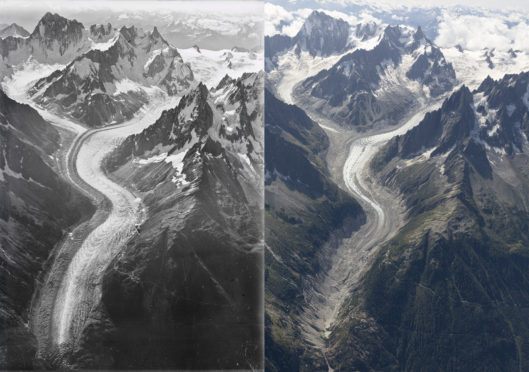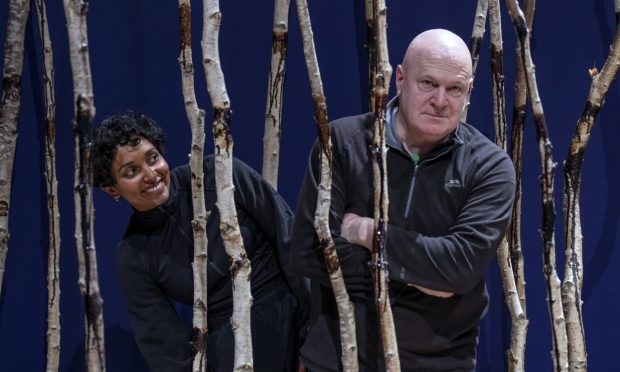Researchers from Tayside have recreated the flight of a Swiss explorer to underline the impact of climate change on Mont Blanc.
A century after pilot and photographer Walter Mittelholzer soared above the mountain in a biplane to capture stunning images of the alpine landscape, two specialists from Dundee University returned with the very latest technology to see how the glaciers had shifted in 100 years.
Dr Kieran Baxter and Dr Alice Watterson from the 3DVisLab at Duncan of Jordanstone College of Art and Design, which is part of the university, found evidence of massive ice loss.
Dr Baxter said it had been “a breathtaking and heartbreaking experience” and he hoped the images would help to convince people to take action on climate change before it is too late.
The pair used a process called monoplotting to triangulate the original camera position in airspace. By using the mountain tops as anchor points they were able to find the exact spots where the historical shots were taken.
The resulting photographs of the Argentiere, Mont Blanc Bossons and Mer de Glace glaciers show large scale ice loss in the region.
Dr Baxter, equipped with multiple GPS devices, hung from the side of the helicopter as it hovered at a height of around 4,700 metres, just below the summit of Mont Blanc, to capture the photographs.
He said: “The scale of the ice loss was immediately evident as we reached altitude but it was only by comparing the images side-by-side that the last 100 years of change were made visible.
“It was both a breathtaking and heartbreaking experience, particularly knowing that the melt has accelerated massively in the last few decades.”
The impact of air travel on climate change was not lost on the pair.
Dr Baxter said: “Mittelholzer played a key role in popularising commercial air travel in Switzerland, an industry which ironically came to contribute to the warming of the climate and the detriment of the alpine landscapes that the pioneering pilot knew and loved.
“When working at these heights there is currently no viable emission-free alternative so airtime is kept as brief as possible and careful planning goes into getting the most out of a photography flight like this one.
“Luckily, clear weather allowed these repeat aerial photographs to be taken on the centenary of the originals. Unless we drastically reduce our dependence on fossil fuels, there will be little ice left to photograph in another hundred years.”










